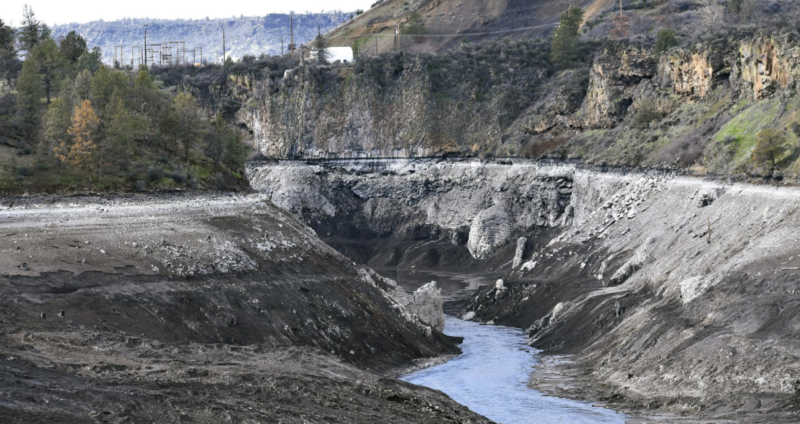by Theodora Johnson at californiaglobe.com
The largest, most devastating dam removal experiment in modern history has reached the point of no return. As of January 23, 2024—despite opposition by a majority of local residents—the four hydroelectric dams on the Klamath River have been officially breached.
Ironically, dam removal proponents claimed the project would help salmon, but now the Klamath River is being polluted with millions of cubic yards of decomposed algae, organic deposition, chemicals, and fine silt that has built up behind the dams. Dead steelhead trout and other species are floating to the banks. Any salmon spawning beds in the Klamath River were undoubtedly destroyed. At press time, conditions in the Klamath River were not likely survivable for the salmon juveniles that were beginning to emerge from
the tributary rivers and creeks on their way to the ocean.
There’s no way of knowing the survival rate of those juveniles until it’s time for them to return to their natal spawning grounds as adults (fall of 2025 for coho salmon; later for Chinook salmon). But there is cause for great concern: by one estimate 26 million cubic yards of sediment is stored behind the dams.1 No one knows how much of it will slough off into the river, or how long the river will remain in its turbid state, or how much of the sediment will settle on the river-bottom.
If 10 million cubic yards of sediment were to settle in the river, we’d see the equivalent of six lanes of freeway piled eight feet deep for nearly 100 miles. There are 192 river miles below the lowest dam, Iron Gate. In total, the river is approximately 250 miles long.
For most of February, turbidity levels in the Klamath River hovered around 500 to 1,000 units over a stretch of at least 100 miles, according to U.S. Geological Survey measurements.2 These turbidity levels are 10 to 20 times what juvenile salmon can survive, according to a 2001 research report by the University of Washington.3

